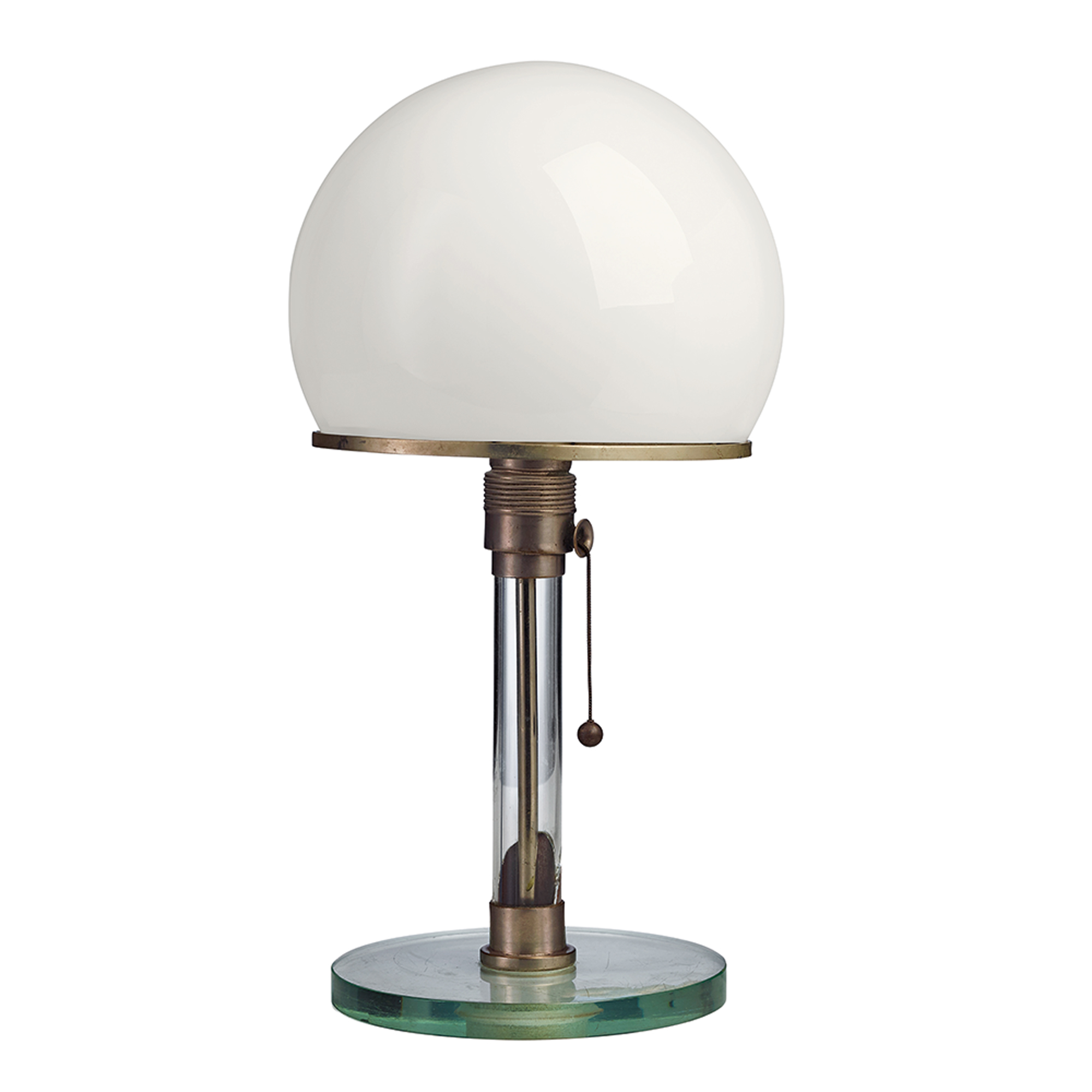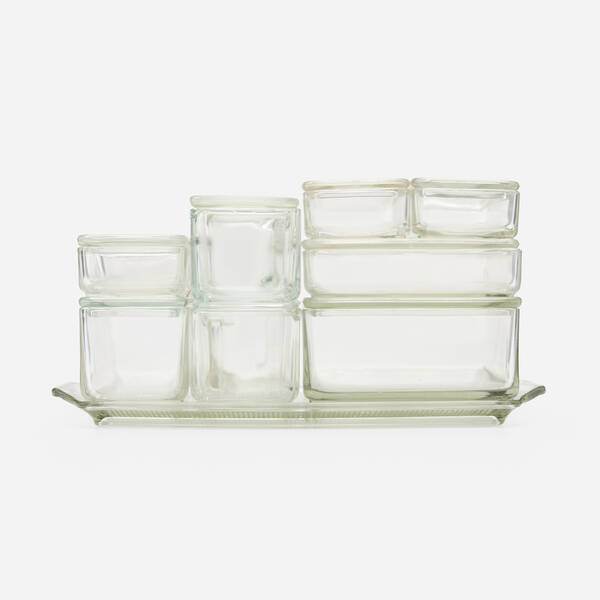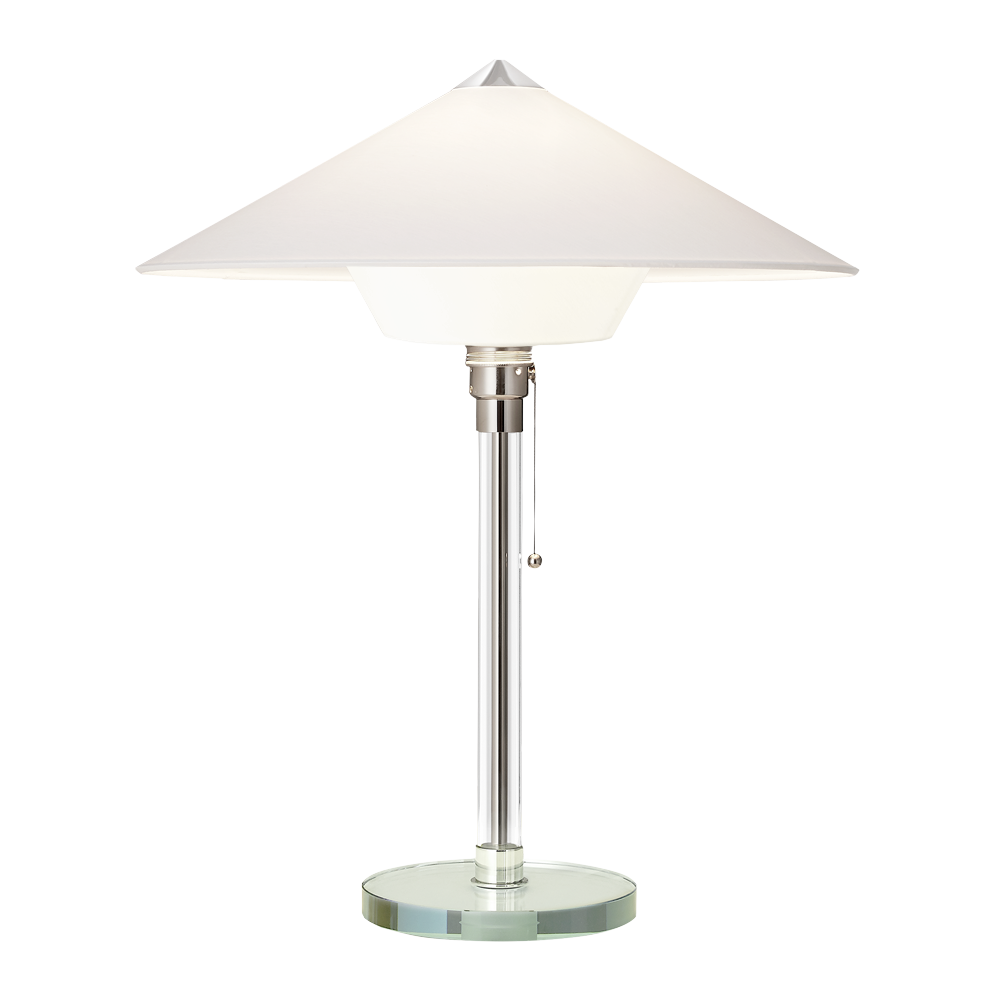

There are designers who make noise. And there are those who shine. Wilhelm Wagenfeld belongs to the latter. His designs are not statements – they are silent presence. Clear lines, clear thinking. No excess, no spectacle. Instead: purpose, craftsmanship, light.

Born in 1900 in Bremen, a city shaped by Hanseatic restraint and Protestant work ethic, Wilhelm Wagenfeld pursued his path with precision, seriousness, and a keen sense of what is possible. In a world in flux – between the German Empire and the Weimar Republic, between tradition and modernity – he chose craftsmanship early on. Not as a retreat, but as a starting point.
After finishing elementary school, he began an apprenticeship as a silversmith at Koch & Bergfeld, a Bremen-based silverware manufactory known for its refined design standards. Even then, it became clear that he was more than a diligent apprentice: he was an observer, a questioner. How does form emerge? What makes an object meaningful? Why does one thing seem self-evident, while another feels superfluous?
He moved on to the School of Arts and Crafts in Bremen, where he was first exposed to artistic design and material-conscious drafting. The school became a space of transition – between practice and theory, between hand and mind. But it remained only a beginning – Wagenfeld wanted more. He applied to the renowned Drawing Academy in Hanau, with a focus on metal design. And here, something decisive happened.
In Hanau, he met Christian Dell, the young master of the metal workshop – himself a graduate of the Bauhaus in Weimar, a radical thinker and precise practitioner. Dell was no dreamer, no formalist. He thought from the material, from utility, from process. And he quickly recognized that Wagenfeld was not just a skilled craftsman, but a potential designer with conviction. Someone who asked questions. Someone who could think with a file in hand.
Dell encouraged him. Challenged him. And introduced him to the idea that craftsmanship is not the opposite of art, but its foundation. That design is a social task. And that there are places where this idea is lived – such as the Staatliches Bauhaus in Weimar.
On October 14, 1923, Wilhelm Wagenfeld applied to the Bauhaus in Weimar. His three-page letter of application is a document of conviction: reflective, well-structured, modest in tone – and precise in expression. Already the next day, on October 15, Walter Gropius, Paul Klee, and Josef Hartwig confirmed his admission. The official record notes: “Recommended by Master Dell as a capable craftsman.” In truth, it was more than that. Dell, who had been master of the metal workshop at the Bauhaus since 1922, had paved the way for Wagenfeld. And that path began immediately – without detour through the preliminary course. Unlike most students, who first completed material studies and basic training, Wagenfeld was admitted directly into the workshop. A vote of confidence he would live up to.



In the spring of 1924, the work began to gain momentum. While the Bauhaus was still debating its direction – craftsmanship or industry? art or technology? – Wagenfeld was already shaping an answer in form. As early as 1922, Walter Gropius had proclaimed the motto: “Art and technology – a new unity.” Oskar Schlemmer’s new Bauhaus logo captured it perfectly: a stylized head, constructed clarity. Even the typography became a sign of a new way of thinking. Wagenfeld took it seriously. His designs became reduced, functional, geometric.

In April 1924, Christian Dell noted dryly in the monthly report: “1 sauce boat by Wagenfeld completed (journeyman’s piece) and 15 table lamps with iron bases.” Dell could not have known that this table lamp would one day become a design icon. At the time, Wagenfeld had been at the Bauhaus for barely six months – and was already ready to create a classic.
On July 16, 1924, the monthly report listed: “10 electric table lamps, metal; and 4 electric table lamps, glass.” They were produced for the exhibition “Die Form” in Stuttgart – where the glass version of what would later become a world-famous lamp was shown for the first time. No one could have imagined then that this lamp – later known as the WG 24 – would one day illuminate countless homes, museums, and offices.
Opal glass. Clear glass. Nickel. Nothing more is needed. The WG 24 is neither retro nor futuristic – it is timeless. It wasn’t designed to please, but to endure. A lighting object that achieves presence through reduction.
But Wagenfeld was not just a lighting designer. He was a thinker of things, a quiet revolutionary of the everyday. After his time at the Bauhaus, he taught at the Bauhochschule in Weimar and later became artistic director of the United Lausitz Glassworks. It was there that his true vision emerged: design for everyone. Storage jars, salt shakers, teapots – everyday objects elevated by form and function. No decoration. No gesture. Just an invitation: use me.



Wagenfeld’s designs follow no style, but a conviction: function is form.
This is evident in his glassware for Schott, his stackable tea service, and his famous egg boiler from 1933. Everything is thoughtfully conceived, everything reduced to the essentials. His 1930 tea warmer is particularly sculptural: glass on glass, light in a state of weightlessness.
Another example of his practical approach to design is the multipurpose lamp WNL 30. Originally described in a brochure from the Weimar Bau- und Wohnungskunst GmbH as a “bedside lamp, also suitable for wall mounting,” it demonstrates just how versatile Wagenfeld’s thinking was. In reality, it also functions beautifully as a piano lamp, shelf lamp, reading light, or mirror lamp. A lighting object for changing situations – adaptable, functional, and quietly present. For TECNOLUMEN’s re-edition of the lamp, original drawings from 1930 were used. Here, design becomes a conversation with daily life.
His post-Bauhaus lighting designs carry the same spirit: the WG 28, even more restrained than the WG 24; the WA 24 series of ceiling and wall fixtures; and the technically poetic WA 23 SW. All are expressions of a consistent, materially conscious design philosophy.
Less well known, but equally emblematic, are Wagenfeld’s door and window fittings from the 1950s. No ornament, no attitude – just pure function, clearly articulated. And remarkably contemporary even today.



After the war, Wagenfeld established his own studio in Stuttgart in 1954. He worked for companies such as Rosenthal, WMF, Braun, and Jenaer Glas. He designed radios, cutlery, and home accessories – always with the same attitude: nothing symbolic, everything functional. And yet: poetic.
His designs received numerous accolades, including the Grand Prix at the Milan Triennale and the Federal Award for Good Design (Bundespreis „Gute Form“). Museums such as MoMA in New York and the Vitra Design Museum included his work in their collections. But Wagenfeld remained composed. Perhaps because he knew: the objects speak for themselves.
When TECNOLUMEN was founded in 1980, one thing was clear: the first lamp would be Wilhelm Wagenfeld’s WG 24. It embodies everything TECNOLUMEN stands for – reduction, respect, and craftsmanship. Wagenfeld was closely involved in the re-edition. Each piece bears the TECNOLUMEN hallmark.
Today, the famous “Bauhaus lamps” – and with them a piece of design history – are produced in the Bremen-based manufactory. Individually handcrafted, numbered, precise.
Wagenfeld’s designs are not loud. But they endure. In everyday life, on the shelf, in the hand. In the gesture of touch. In the attitude of use. They are simply there – and that is enough. Because truly good design is not only seen, but above all felt.
And perhaps that is Wilhelm Wagenfeld’s quiet triumph: that his objects do not seek attention – they seek application.
Thus, light becomes attitude. And a name becomes an idea.

A group photograph from this time shows Wagenfeld with a pipe, his brow slightly furrowed, his gaze turned to the side. One has the sense of watching him think. Perhaps the photo interrupted him in the midst of a design process – perhaps his mind was occupied with a fitting, a base, a glass body. As early as December 1923, Christian Dell reported that his student was “working on designs for lighting.”